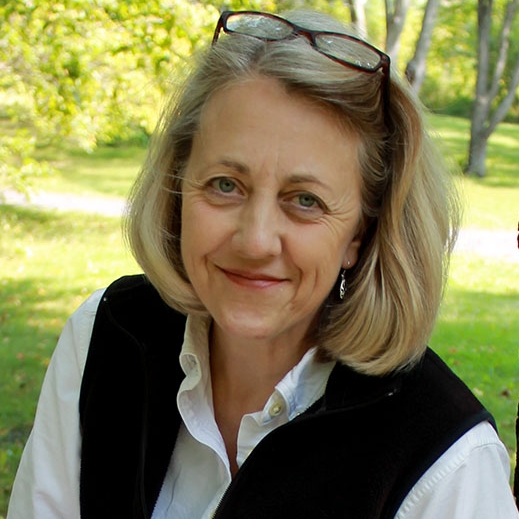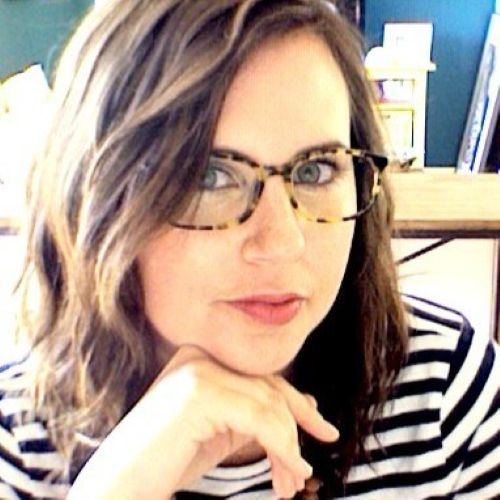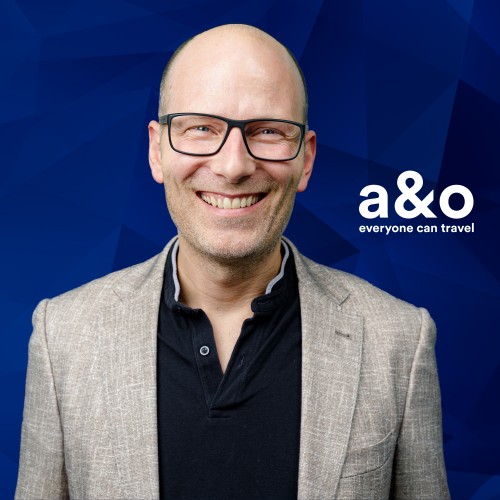Jean Mackay
Episode 40: How to Collaborate with a Large Region, with Jean Mackay
In this episode, you will learn strategies for collaborating with a large region like the Erie Canalway National Heritage Corridor from Jean Mackay.
Jean Mackay has served as a director of communications and outreach for the Erie Canalway National Heritage Corridor since 2007. She manages all aspects of web based and print media and works collaboratively with organizations throughout the 500-mile long National Heritage Corridor to preserve Canal Heritage, promote tourism and foster vibrant communities along the waterway. Jean formerly worked as director of education for Autobahn International. She holds a MS in environmental education from Lesley University.
More on Jean’s Background
I’m so excited to have you here today, Jean. Thank you so much for joining me.
Thanks, Nicole. It’s great to be here.
I really enjoy reading these bios at beginning of our podcast, but I know that they only kind of scratch the surface of who you are and where you’ve been on your journey and your professional career. Could you tell us a little bit more about your story?
Sure. Well, as you read, I’ve been with Erie Canalway National Heritage Corridor for 10 years, and prior to that I was involved in environmental work. So I’ve long really been interested in the intersection of people and place and, in particular, developing kind of a sense of place so that you really know where you live and what’s great about it. That leads to a certain amount of pride of place and also stewardship of what you have. So this position that I’m in now is kind of a perfect way to build on that because I get to be in some ways the voice of the Erie Canalway National Heritage Corridor as communications director.
So I see my job as in some ways holding up a mirror to people who live here to say this is the best of what we have. This is a really unique corridor that doesn’t exist anywhere else in the world and it’s worth preserving and it’s worth celebrating and exploring and it’s exciting to do that. Then I also get to show that externally to people from outside who don’t live here, who’ve never been here, don’t know much more than the Erie Canal than the song they learned in fourth grade and to show what this place is about to a broader audience as well. That sort of drives a lot of my work, kind of providing that face for this place and what makes it so interesting and so worthwhile.
I really love that. This whole idea of pride of place and what you call holding up a mirror to the people who live here as to what they have right in front of them has been a common theme actually through a lot of these podcasts and the conversations that I’m having. I just think it’s such a great way to think about our work beyond maybe just the tactics and the marketing or communications that we’re doing but just kind of that broader impact that we’re having. I just find that really interesting and love that you brought that up right here out of the gate.
Yeah. Well, so the other thing about me is that my background is in education. It’s not really in marketing or tourism, but I’ve been doing that and there’s certainly an intersection with what I do here with tourism and marketing. However, I’m really thinking about it and I come at it with that kind of more education lens. It really is true that so often what’s right in our backyard we just don’t see because we drive by it everyday or we feel like, “Oh, there’s the river. There’s the canal. We have a bike path, yeah.” But then you’d say, “Wait a minute. We have a 365-mile bike path here in New York State that runs from Buffalo to Albany. That’s pretty awesome.” That’s not something that every community has. So part of it is just like, “Okay, what do we have that really is our strength and how can we help people see that?”
Yeah, that’s great. I also find it interesting that you tie in the education piece and although it hasn’t come as frequently but that has been part of it too. There’s been other folks that I’ve had on this podcast who have a educator background, were a teacher or something else in a prior career. It’s kind of interesting how that does intersect with the work that you’re doing and that tourism professionals are doing in New York State. So I think that’s a really cool thought as well.
Getting Visitors to See a Large Region, No Matter their Entry Point
On this podcast, we like to focus in the areas of creativity and collaboration. I find as we have these conversations that it’s kind of hard to talk about one without talking about the other because a lot of times some of the creativity as it presents itself ends up being in the form of some sort of a creative collaboration. But I’d like to start by focusing on creativity and just understanding that and this is a little bit more slanted of course towards tourism and hospitality.
Sure.
Of course there’s the other piece of the canal which is the locals and that also intersects with tourism and hospitality because it’s all about quality of life of course — that’s why we choose to live here. But understanding that it’s a pretty competitive industry and even though we have the Erie Canal and the only one of its kind in the world, there are bodies of water in other locations. There are canals all over the world. So what are some things that you have done to help the Erie Canal to stand out? Some creative ideas or programming that you might have as a good example?
Well, I love the whole focus on creativity first of all because that’s really straight up my alley in terms of personal interest. I love a job where I’m allowed to have a lot of creativity. I consider myself a creative thinker and a creative problem solver. So there’s just lots of ways to bring that in to the work that I do with the Erie Canalway National Heritage Corridor. So in terms of standing out from the crowd, one thing that was sort of a gift I feel like right out of the gate is that the Erie Canalway National Heritage Corridor is part of the National Park Service. So that comes with a certain amount of strength in terms of branding where I feel like the National Park Service already carries a certain weight.
People know the National Parks, so one of my goals early on was to take advantage of that and bring that National Park Service branding into Erie Canalway National Heritage Corridor to bring in a strong design standards whether it’s signs or brochures or our website so that people see that it’s a quality experience and that it meets the quality that people may expect from the National Park Service. So capitalizing on that has been really important to me and I think has helped us stand out because we can take advantage of that position. Does that make sense?
Absolutely, yeah. I think that’s a really great example. Understanding your brand but then understanding the assets that you have and those relationships that you have and how that can help tell your story in a different way to stand out, I think that’s a really great example.
The other thing that I’m sure we’ll talk more about here, but this is a very large corridor, more than 500 miles of waterway here and we run from Albany to Buffalo up the Lake Champlain, along the Champlain Canal and the corridor also includes the Oswego Canal and the Cayuga-Seneca and the communities that are along them. So I think I’ve looked for creative ways that we can integrate multiple sites so that each one is unique amongst themselves but that when you string them together, you almost have the string of pearls kind of concept and our job is to help coordinate that and to make connections between these sites so that we have parts and we have each part that’s part of this larger whole that constitutes a National Heritage Corridor.
Yeah, I think that’s really interesting too. Can you elaborate a little bit on that because what I’m envisioning is really the movement of people, right, along this place which is the Erie Canal which is very, very large. How do you tackle that? Can you give us a little bit of an example maybe?
Sure. There are lots and lots of canal-related sites along the corridor. Some communities have museums. They may be really larger and well established museums like the Erie Canal Museum in Syracuse or they may be small canal museums like the Historic Palmyra in Palmyra, New York. But lots of communities have some kind of a canal related site. Sometimes there are canal remains from the 1800s and sometimes there are locks or engineering sites that are still in use today. So one of the things that we’ve done is kind of make an inventory of all of those sites that are within the corridor and then form partnerships with those sites that have staff or that have a strong volunteer core so that we can try to coordinate with them and really understand what they do and what their stories are and then what ways we can weave those together so that we can take people from one site to the next.
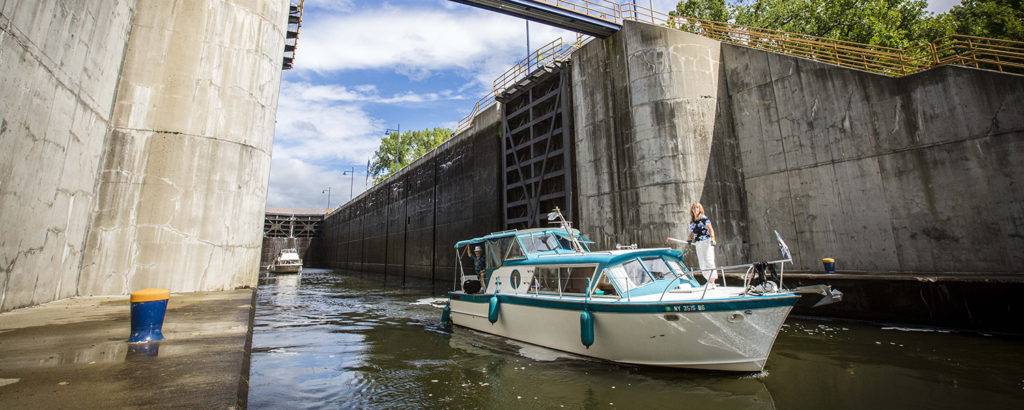
[bctt tweet=”“Work with destinations to weave together a story for the region.” – Jean Mackay #WhyCollaborate #Podcast”]
Yeah, that’s really great. You know what else is interesting is like you mentioned you’ve got just a varied degree of different sites and attractions, some that might have staffs, some that might be volunteer run, some that might be canal remains versus an actual operating and working canal. So I can imagine that can pose a little bit of a challenge at times. But also I love the idea of kind of telling that story and helping people navigate, right, navigate this waterway, whether it’s on the water or on that bike path or however they might enjoy it.
Well, I’d say one of our biggest challenges, it is also maybe one of our biggest strengths and that’s the size of the Erie Canalway National Heritage Corridor. So we cover a really big territory. So within that, it’s also very porous. People could come in through Rochester and leave in Syracuse or they may come in through Syracuse and leave in Syracuse. They could come in along the shore way or any number of points, and it’s not like a typical national park where you go in the gate and you get a little new letter that says, “Here you are Yellowstone.” For example, or Yosemite. We don’t have that single entry point.
So we’ve had to look for ways that we can create multiple entry points and multiple gateways and then build on the largeness of the territory as a strength as opposed to a weakness. But that takes a lot of coordination so one of the things we did early on was we formed a partner, we developed what we call our partner program to focus on those sites that could serve as gateways for the corridor. My goal with that was to really build relationships with the people who are on those sites so that they would know who we are and I would know who they are and we could feel free to pick up the phone and I’m not just some person some place off in the distance that you don’t know who that is, how sometimes you’re calling people at the State or the Federal and you have no idea who you’re supposed to talk to.
So I really wanted to make sure that people out there on the ground along the canal knew who we are and who to call when they have questions or they needed something. So by having kind of a systematic program, it gave us a way to really have clear communication between sites and then to also provide them with the tools they would need to be that gateway for us. So one of the things that we did was to do signs so that when you walk into say the Erie Canal Museum or the History Center in Tonawanda or Schoharie Crossing State Historic Site on the eastern part of the canal, you see a sign that says basically we’re part of the Erie Canalway National Heritage Corridor. It talks a little bit about what that site is but it also shows the map of the whole corridor so the people get that sense that this site is important because that it’s part of something larger.
Then we also provide visitor information so that each of these sites will give out an annual map and guide or give out some brochures to the Erie Canalway so they have resources to give out about not just their own site but again about the larger corridor. The goal really is to get people to see that there is more than that one site, so if they come in in one place, they can pick up some information that takes them to the next place and that that place might tell a different part of the story or have something new to share. So we want people to experience more than just one site along the canal.
That’s great. I love that idea of multiple gateways and how you came up with that solution to a challenge which is you don’t have a gateway to this particular national park and it is 500 miles long and there’s many places where people can experience it. I think that’s really interesting too how at these gateways you’re able to at least get information out so that people who are there, going back to that sense of place, have a sense of place of where they are but also of how big this place really is. That’s a really great approach. That’s really awesome.
Right. It’s really important because if you’re working on a single site, that’s your view. Most days, you’re working on the visitors that come in your door and the grounds and all the different challenges that you have at a single site. But my job is to help people expand their view a little bit so they see the bigger picture and feel connected to something, that what they do at that particular site really matters. It really matters in the big picture of the story of the Erie Canalway National Heritage Corridor and it matters to the visitor experience overall.
Yeah, absolutely. I think that’s great.
Erie Canal: From Inception to Today
Jean, this is not on our question flow document at all but I happen to know because I’m in New York State but this is a big year for the Erie Canal because there’s a big celebration going on. Can you talk a little bit about that?
Absolutely. So this is the bicentennial of the canal construction which started in 1817. So although the canal didn’t open until 1825, there was a lot of work that began in 1817 and so we’re hearkening back and looking at that and celebrating that, that initial period where people dug in and started to build the canal and they worked in sections and so different sections came online from within a year or two of when the first shovel of dirt was turned. So we have lots going on this year along the canal because there’s loads of bicentennial event and voyages and celebrations all along the canal. A lot of that culminate with the World Canal Conference that’s coming to Syracuse September 24th to the 28th. So we’ve been involved in a lot of those celebrations and it’s great because it’s really helped to shine a spotlight on tourism and coming to the canal and all that it offers.
Yeah, I think that’s fantastic. There have been a lot of celebrations and press coverage, and I’ve seen a lot of it on social media as well. So just a general kind of celebratory mood in terms of the canal. For our listeners’ sake, can you just take us on a little brief history lesson on the canal because it really did change the trajectory of our state when it was built. Some of our listeners might have an awareness of that but some of them might not. Would you just, yeah, sharing a little bit about that?
Yeah, so if you go back to the early 1800s, you had a country that was hardly settled. A lot of the communities were mostly along the East Coast but the whole interior of the country was really wild. It was difficult to get to places because roads were not really built or in terrible condition and it was hard to move people or to move goods around the country. So the idea of the Erie Canal was to build a waterway that would connect the Hudson River at New York with the interior of the continent via the Great Lakes. It was one of the few places that a canal of that size could be built because there’s the Great Appalachian Mountains that goes all the way up the East Coast. So there’s a break in New York State where you could cut through the mountains.
So it was a crazy idea at the time to do it because we’re talking about nearly 400 miles of digging a ditch through wilderness. So it became symbolic in some ways with this impossible idea but once done, it also took on a greater meaning of what America could achieve, what people could do with big vision and sacrifice and hard work. So the canal sort of helped America in many ways come together and define what does America mean, what does it mean to be American because before that, you had a lot of people who were Irish or German or Italian or from wherever they came from and that was their identity. But for the post-Erie Canal, you had an identity that was uniquely American and that’s one of the really important things about the canal and the canal story.
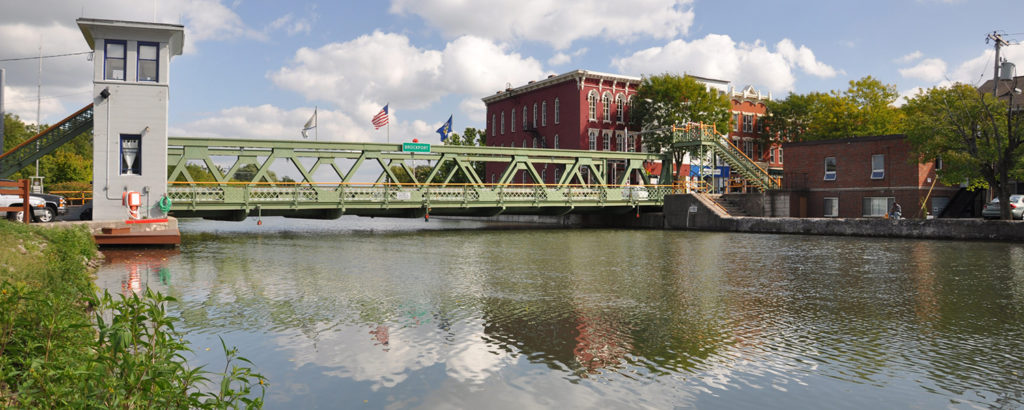
[bctt tweet=”“The Erie Canal brought people together in a uniquely American achievement.” – Jean Mackay #Podcast”]
But so anyway, 200 years ago, the first shovel of dirt was turned in Rome to build the canal. It took between 1817 and 1825 a lot of digging and as I said, through forests, through fields, through cliffs, through swamps. It was really difficult work. A lot of the work was done by local farmers who helped when the canal went through their land but in the central and western part of the state, there weren’t a lot of people who already settled that area and so they recruited work gangs, basically, went down to New York City and that’s where a lot of Irish immigrants and other immigrants came up to New York State and dug the canal.
So it was considered right away just kind of an engineering marvel because there were so many unique things that needed to be invented to make it work. They needed to invent hydraulic cement so that water didn’t drain out of the locks. They needed to figure out how to pull enormous stumps out of the ground and how to dig through solid rock. So when the canal opened, it was immediately celebrated as an engineering marvel and also it just was an incredible success because suddenly it improved the transportation time from New York City to Buffalo and beyond so people could move goods and people and settle the Midwest. So it really opened up America to settlement and to immigration. It also just lead to the success of New York City as the nation’s financial center because that was then the port that people wanted to come to because it meant that they could get from there to the interior of the country in ways that New Orleans or Boston or other places couldn’t do.
Yeah, and I think all of those reasons are just really incredible to think about, sitting here today, it’s hard to imagine a time when we didn’t have easy access like we do today and how that changed everything and that it was and still is really an engineering marvel. So now it’s evolved. Obviously we don’t rely on the canal as much for moving goods or people anymore, so now it’s evolved. Can you speak to a little bit about what the vision is today for the canal?
Yeah, sure. So one of the things I think is really important is for people to know that the canal still exists. You can still get on it. That’s something that a lot of people do not know. They think, “Oh, the Erie Canal. Wasn’t that something that was like in the 1800s?” Yes it was but it was so successful that it was enlarged several times. In fact, shortly after it was built, it became choked with traffic and so New York started to expand the canal and enlarging it and widen it and deepen it to allow for more boats and more traffic. So there was an enlargement that happened in the 1800s and then again sort of in the late 1800s, early 1900s. Motorized power came in to be and so the canal engineers and New York State sort of looked at the canal and said, “We need to enlarge this canal again to allow for motorized vessels because we no longer need to pull boats by mules or horses anymore.”
So the canal was enlarged in 1918 and it allowed for large barges to go through and motor ships. It continued to be used as a commercial shipping waterway with some tourism traffic in the early 1900s but probably by the 1950s when the Saint Lawrence Seaway opened, commercial traffic really dropped off pretty dramatically. So there’s still some commercial shipping on the canal but again probably like in the ’60s and ’70s, people started to re-envision what could the canal be since it’s no longer so much of a commercial shipping corridor and a lot of manufacturing had moved out of the state or moved overseas. So communities were sort of struggling and had this waterway in their backyard that was under utilized.
So that’s when the state formed a Recreation Way Commission and they came up with a plan for revitalizing the canal and looking what communities needed in order to make it really a recreation way. Some of that was visitor centers or better amenities for boaters, more tourism focused to try to attract people here. At the same time, in the 1990s, congress commissioned a study to look at the canal in terms of its historic significance and out of that was born the Erie Canalway National Heritage Corridor. So there’s preservation and management plan that comes with the corridor and we’re charged with carrying that out in cooperation with the state and with local communities and with organizations along the canal.
The vision is really to transform the waterway today into a vibrant part of what New York State has to offer to its residents, to people who live here, to people who work here but also to attract people worldwide because this is a place that really, it’s very unique to be able to travel by this historic waterway weather you do it on a boat or you come and you explore by bike or people also come and drive the corridor. We’re also working now to create a water trail along New York State Canal System so that people in kayaks and canoes will travel the length of it and it connects right into the Hudson River and so you can basically go by boat all the way to New York City.
That would be a cool feat. I can’t wait to hear the story for the first person who does that.
That’s already been done.
Oh, it’s been done. oh good.
It’s been done, yes. There’s been in fact several voyages and we have a crew team actually from the Rochester area that has done an annual journey from Buffalo to Albany for the last several years. After school is out, they spend a week on the canal.
Oh wow, that’s awesome.
So it’s great. We had an experimental kayak voyage a few years ago called Spare Seat which a couple of kayakers did the whole journey, well all the way to New York City and that was a good test of what it was like to paddle and what kind of needs did we have here, how could we better improve the system for paddlers and so out of that, we now have a water trail that’s complete from Rome to Waterford and we have funding in place to expand it through the whole New York State Canal System over the next couple of years.
Oh, that’s exciting.
Yeah, it’s really great.
Yeah, that’s really awesome. Well, I really appreciate that kind of deep dive into where the canal has been and then also how it’s evolved and kind of appreciated that timeline of what happened from the ’60s and the ’70s and into the ’90s which then lead to the Erie Canalway National Heritage Corridor. I think that’s just very helpful perspective to understand how this huge asset that we have in New York State is always evolving.
It is evolving, right. I think it’s important to see that places do evolve. So I think that the canal corridor in some ways is a good mirror for what’s happening in the country. Even as a whole where a lot of cities really struggled in the ’60s, there was a renewal and we knocked down beautiful architecture to make way for highways and malls and different things and we thought, “Oh, I guess that didn’t work out.” So creating a lot of places really lost a lot in that but a lot of manufacturing has left and so now I think our urban centers are focusing on revitalization.
A lot of younger people who want to live in urban areas again. There’s tremendous focus on place making and revitalization and part of that is absolutely integrated with heritage and looking at what are the unique assets from a historic point of view, whether it’s architecture or the story of a particular community and how can we leverage that for the future. So we see a lot of that happening along the canal. We also see some really exciting borrowing that goes on. Folks in Lockport look at Fairport and said, “They’re doing some really interesting things there with their community. How can we do that? Let’s go there and find out and come back to our community and put some things in place.”
So we see that kind of collaboration between communities happening a lot and at the Erie Canalway National Heritage Corridor, we’re trying to facilitate some of that dialog to happen as well in the same way that we can connect sites together, we can also connect communities and help people connect the dots and learn from each other along the corridor so that in some ways, rising tide rises all boats.
Absolutely.
Kind of thing is happening here.
How to Make Projects Better Through Collaboration
Yeah, well, that is a perfect segue into the next part of our conversation that I like to focus on which is of this whole idea of collaboration and sometimes I even refer to it as coopetition where maybe perceived competitors, so maybe a community is perceived as a competitor of another community for residents, for tourists. But they actually come together and collaborate and cooperate because by coming together, they can create something bigger than they can do on their own.
Right.
So you just gave us a really good segue into that speaking of this borrowing idea and putting these communities together. Can you describe another or just go a little bit deeper on that particular example of collaboration that you’ve seen succeed?
Sure, yeah. Absolutely. I guess I’d start by saying that I think the competition and this idea of, well, if they do well then I’m not doing well- it’s an attitude thing. I like to think about kind of changing the paradigm there because to me, the partnerships and working together is really a way for everybody to do well and to kind of reduce that competition if you will. I mean, there can be good parts of the competition but I also feel like the more everybody is strong along the corridor, the better it is for the corridor as a whole. So it’s not just that western canal is great and the Mohawk Valley is struggling or the Mohawk Valley has great waterway assets than some place else.
We need to have everybody rise up in order for everybody to succeed together and so that’s a really important part of the work here. But it involves seeing that that’s possible and that we’re not really competing with one another, that the stronger each community and each site is, the better it is for everyone. So I just think that that as an idea is really important to convey. So then I think we really look in our organization for partnerships that can help us advance everyone. So that means partnerships at the federal level, at the state level, at the local level and with organizations themselves whether they’re community organizations or statewide organizations.
So with any project that we do, we try to look at who can we partner with so that we get more bang for the buck if you will, so that we can go farther than any one organization could go alone. I think we find that whether it’s working on a water trail or doing in a way a tourism project, when we work in partnership with other organizations, we can advance a lot further.
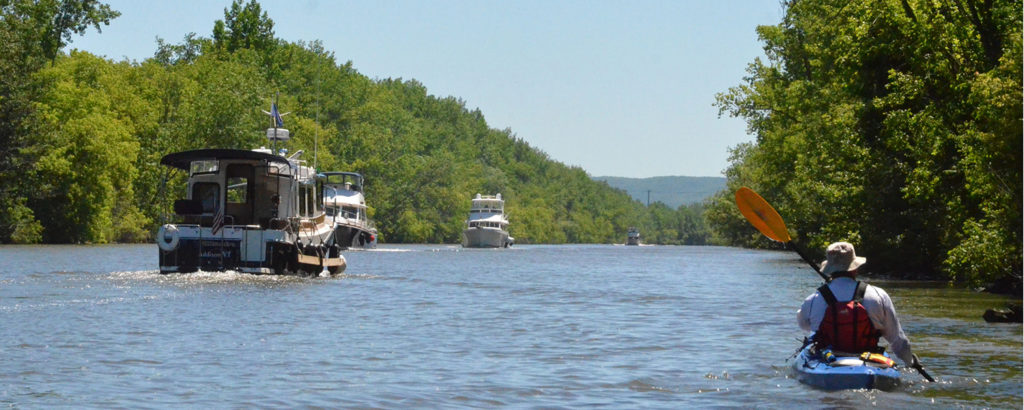
[bctt tweet=”“Always ask ‘Who can we partner with to make this better?’” – Jean Mackay #WhyCollaborate #Podcast”]
Yeah, I really like that. I love what you said, competition, you see it more as an attitude and that you’re interested in helping to change that paradigm which I completely agree with. I also like this whole notion of partnerships, looking for partnerships that help advance everyone so that’s kind of goes along the same lines, looking to strengthen the whole versus just what’s in it for me. I think that’s just a really important point that you made.
So for example, with something like the bicentennial is a good example where there’s many, many people kind of coming together to make things happen and that no one organization say it’s going to own the bicentennial because that would just not work. You know what I mean? I think part of it with these collaborative partnerships is starting out by saying what’s the shared mission that we have and trying to get people kind of on the same page with that so that everybody’s bought into the idea of working for the greater good as opposed to I’m just doing this for my organization or ensuring the spotlight on me. Because then I think that does not work so well.
Then coming to the table and saying, “Well, what assets do we have that we can pull together?” So with the bicentennial for example, there have been a lot of voyages that have happened this year, with the Albany Symphony Orchestra that did a seven-day voyage along the canal and they did concerts every night in a variety of communities. The Lois McClure which is the Canal Schooner is also out on the waterway this summer going to multiple locations. So early on, we meet with those groups and we sit down with the Canal Corporation, with Erie Canalway, with the groups themselves and we say, “Okay, what do you need?”
It’s often similar for these kind of voyages where they need support on the water to get from port to port. They need some support on the ground when they pull into a port so that they know what the services are and who they’re connecting with in the communities. They need some outreach support so that people know about the journeys and so we kind of look at, “Well, who has the assets to achieve all those different needs?” So the Canal Corporation has a lot of assets for on the water, helping people that are doing a voyage like that, make sure that they have what they need on the water and in the port knowing where the boats can fit and what the draft is and all that kind of stuff.
When it come to some of the promotion and outreach, Erie Canalway has a really good network and good social media and newsletters so we can help spread the word about those things and we know a lot of people and communities in sites that we can kind of connect an organization who’s doing the voyage with people on the ground because they may be less familiar with that. Then in return, the people doing the voyage are bringing a vibrancy to the canal that we all can benefit from. So those kinds of partnerships then just really build on themselves and create something great for the corridor and for the people who live here and the people who are visiting as well as for the organizations who are putting them on, that’s great for them as well.
Yeah, I totally agree. I think that’s a really good example that you just took us down that path with those voyages and the different organizations that can support and the support that’s needed, just by the very nature of moving a boat down the canal, you need to have multiple and organizations involved. I think that’s just a really incredible example. The other thing that I liked about what you just shared with us is you actually gave us some good advise on how to have a successful collaboration. You talked about having everyone come together, coming up with that shared mission so that everyone’s in agreement on the mission, coming to the table, so being present is obviously very important if you’re going to be part of a partnership or a collaboration and then identifying those assets and those strengths that everyone brings to the table and who can bring what, where their strong points are. I think that was a really good kind of summation of what it takes to put these together.
Yeah, people sometimes ask me about partnerships and how do you navigate them, what do you do, and a lot of it is about building relationships and building good communication between organizations, between people and organizations. But I think partnerships are kind of relationships with a purpose. It’s not just because it’s nice, although it is nice. But sometimes it’s not nice. Sometimes it’s challenging. But there’s a purpose behind it and that purpose is really critical when the relationship becomes challenging and it often is.
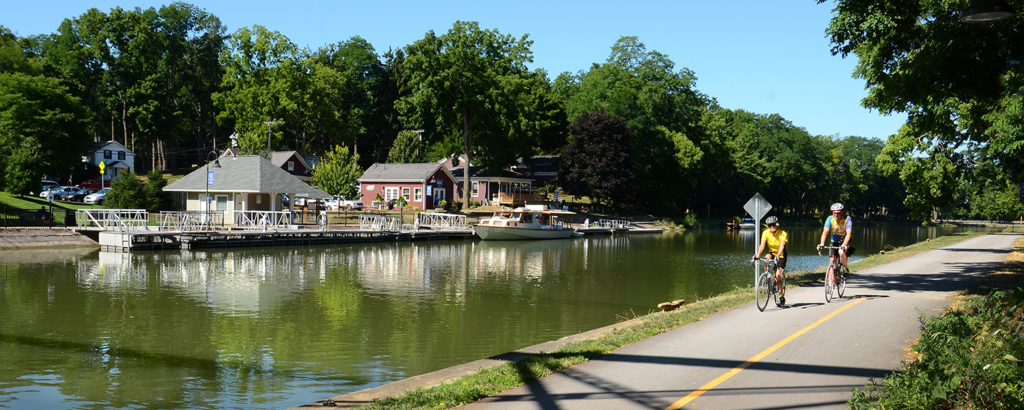
[bctt tweet=”“Collaboration works when you build good communication between organizations.” – Jean Mackay #Podcast”]
There isn’t really such thing as ideal partnerships because you’ve got people and organizations and money involved and so having a good mission fit and knowing what the big goal is, that really helps along the way because there’s a lot of times that you have to say, “All right, well, we can get through this struggle area or let’s figure it out. Let’s figure out how we can get through this struggle or this issue because the mission is what’s worth it and what’s driving it.” Holding out that mission helps people to see the bigger picture when they’re mired in the difficulties.
Yeah, I think that’s really great advise and a good illustration of how to have a successful partnership again but also how to kind of navigate those bumps along the way, bumps on the road along the way.
Yeah, I suspect that a lot of the listeners and tourism organizations out there also struggle with capacity. That’s another area where kind of understanding the capacity of your partners is important because not everybody can work at the same speed or has the same assets. So kind of understanding the big picture but also how the pieces fit together and who’s going to do what and how it’s going to work and what kind of time people need in order to make things happen.
Right, I think that’s really great. That example or idea, this whole idea of capacity and understanding the people that you’re working with. Sometimes it can be frustrating if you’re working at one speed maybe and someone else isn’t keeping up necessarily but kind of remembering where they might be coming from and what’s on their plate and maybe they don’t have as much assistance, internal assistance let’s just say or staff resources or financial resources as you do. That’s definitely a part of the mix as well. Do you have any other tips for managing expectations because I think that’s a really great one and just thinking about being sensitive to capacity? But how do you kind of lay the ground work when you’re moving forward on a project?
I think usually I will do some initial outreach to figure out who the right people are that should be either on the email list or in the room at a meeting when you’re first talking about a project. Sometimes you can invite collaboration at that stage about the shape of a particular project and sometimes you can’t. Sometimes it’s already been shaped when you’re asking people to come on board with you. There maybe places for input and so kind of knowing what those, where there can be input and where there can’t is helpful. I think that initial outreach is important just to get people on the same page and to have a sense of a timeline.
I think the big thing for me is that I’m always aware that everybody is really busy, everybody’s plate is overflowing. So I don’t need to bog people down in every last bit of minutia that comes across the task. I don’t need to CC everybody on every email. That’s a mistake that I think some people do make in partnerships, just thinking everybody needs all the information. I think it’s important to sort of call some of that so that you’re really only giving partners what they really need and you’re clear about what you need when you need it.
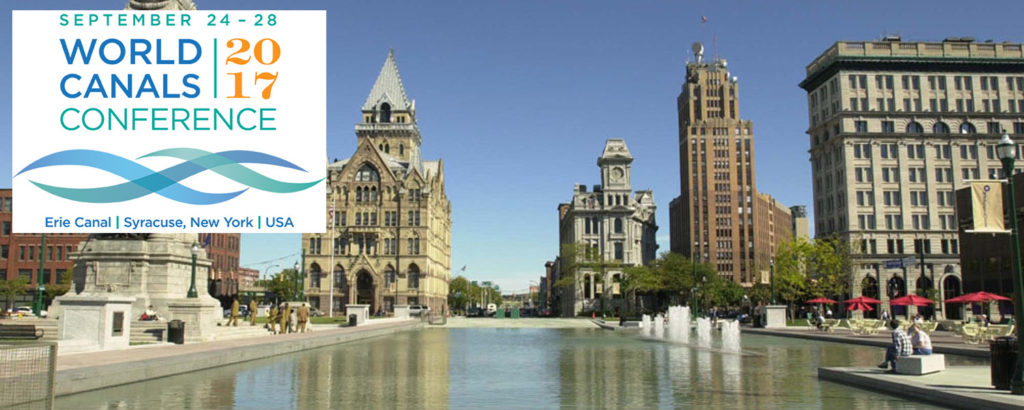
[bctt tweet=”“Everybody is busy, so only include a partner in what they need to be included on.” – Jean Mackay #Podcast”]
That’s a really good point too. That CC on those emails or the reply all.
It can kill you.
Yeah, the reply all. You didn’t have to reply all. You could have just replied to the person that sent the note. But I think that’s really great and, yes, everyone is very busy, I guess, that’s the life that we’re in. But we have places like the Erie Canal where we can go and just slow down.
There you go, right. It’s funny because I think one of the canal’s advantages when it opened was that it was fast, people loved it because it was speedy and now it’s just the opposite, that it really is a place where you slow down and you kind of see life in a different way because you’re traveling at a different place.
The World Canals Conference
Right. Jean, this has been an awesome conversation. I’ve really enjoyed everything that you’re sharing with us. Before we wrap up because I want to be mindful of your time, is I want to give you an opportunity just to talk a little bit about the World Canals Conference that is coming to Syracuse. You mentioned it earlier in our conversation. This podcast will be coming out prior to the World Canals Conference so I’d like our listeners to know a little bit more about that. Can you just share with us a little bit more about the conference and what you’ve been up to?
Sure. So the World Canals Conference happens every year and we’re really excited to bring it to New York State again this year because of the bicentennial year. The Erie Canalway National Heritage Corridor is hosting the conference in partnership with the New York State Canal Corporation, and we’ve been collaborating quite closely with Visit Syracuse as our local host because that’s where the conference will be. So it’s taking place September 24th to the 28th and that’s when people from around the world will descend on Syracuse to learn about canals, to share expertise about a variety of aspects related to canals, the kind of management, tourism, engineering, living on the waterway, recreation. There will be a variety of conference workshops around that.
But the theme for the conference overall is around canals and waterways as agents of transformation and certainly that’s a thread that we have a strong story of transformation in New York State with the canal and what it meant and what it did to transform New York State initially but also how it’s transforming things now and what people are doing with them, the investments that are being made in the canal. So we’ll be sharing lots of stories around that from both New York State but also around the world, people are coming and talking about transformation.
That’s great. There’s a few public events too, right, as well that go along with the conference?
Yeah, on Sunday the 24th, that’s the big public event day. So that will happen at Syracuse Center Harbor. It’s just going to be a great celebration. So it’s happening in the afternoon from 1 until 6. So the Canal Schooner Lois McClure will be on the water and open for tours there. The Corning Museum of Glass is bringing in its GlassBarge and they’ll be talking about the story of blowing glass and the fact that Corning and the founding of Corning Museum came through the canal. They were looking for a place to set up their glass operations and so it took the Erie Canal across and then down and found their headquarters in Corning, New York. So they’ll be on the water blowing glass and then there will be fishing demonstrations and music and cultural exhibits and boat tours of the lake cleanup.
So there will just be a lot of activities for families and for everybody on the water. We’ve also got someone bringing kayaks so if people want to try out paddling on what the water, see what that’s like. It just should be a really fun day to be out and about. The museums community in Syracuse is also open that day and they’ll have some special exhibits going on so there’s things going on downtown as at the inner harbor and you can walk between them along the Syracuse Creek Walk which is a pathway that the city has developed to bring people to its waterfront so that’s another kind of transformative project for Syracuse to reconnect people with the water. So we hope people will be able to come out. It should be great.
Yeah, that sounds really awesome and I’m sure it will be a fun celebration and a really interesting conference. Very excited to have that coming to Syracuse and into New York State again. Jean, do you have any final words that you would like to share with our listeners before we say goodbye?
Well, I would just say on the World Canals Conference, people can certainly go to the website for details and that’s wcc2017syracuse.com. Information about Erie Canalway National Heritage Corridor is just at eriecanalway.org. It’s been a pleasure to talk with you more about collaborations and partnerships and I’m excited to do more. We’ve got itineraries that we’ve been pulling together in collaboration with a variety of groups. We’ve got the water trail stuff coming up. So I think there’s a lot of good things that will continue to come not just within this bicentennial year but beyond and my hope is really that the bicentennial shines a spotlight on the Erie Canal and gets people excited about what’s here and that we can build on that and carry it forward. That’s what I’m really looking forward to in the coming years.
Absolutely. Me too. I think it’s going to be a great launch pad if you will for what the future is going to bring. So Jean, I really appreciate your time and you being with us today. I will look forward to talking with you again.
Thank you so much, Nicole. It’s been great to chat with you.
We value your thoughts and feedback and would love to hear from you. Leave us a review on your favorite streaming platform to let us know what you want to hear more of. Here is a quick tutorial on how to leave us a rating and review on iTunes!
